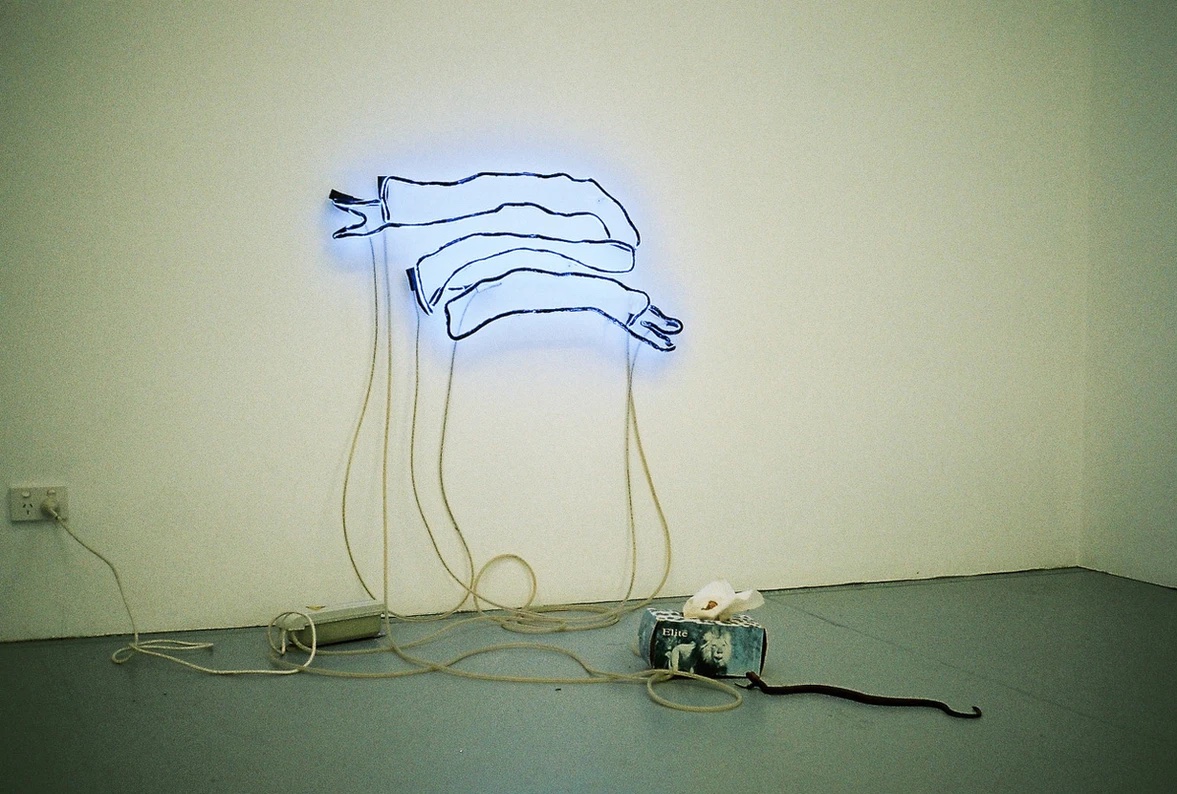ALEXANDRA NEMARIC
Magic Words, Good Manners
04 Jul 2019—21 Jul 2019
The Falling Star
Diego Ramirez
Todas las promesas de mi amor se irán contigo
(All the promises of my love will leave with you)
Me olvidarás, me olvidarás
(You will forget me, you will forget me)
Junto a la estación hoy lloraré igual que a un niño
(Next to the station today I will cry like a child)
Por qué te vas, por qué te vas
(Because you go, because you go)
–Porque Te Veas, Jeanette, 1974
Alexandra Nemaric’s Milk Jug is a sculptural work made of two vases held together on the sides like conjoined twins (or addicted lovers). While the individuality of each vase is clear (since their unique shapes stay legible), they are a single entity bound by form. Their teary blue surface, with textural paint dripping in an endless cry, bears a passionate scene where a bleeding heart expels a far-reaching flame. Drawn with a naïve technique, it swirls on the jars with draconian intensity, engulfing the totality of their bodies with a frenzy. The vases are empty, suggesting that they lack the substance that would complete their function. A set of drawings repeating the image of the urn and collectively titled Black Drawings, surround
Milk Jug. The frames, which the artist (who is also a carpenter apprentice) built and burnt herself, appear to have caught the heart’s firestorm.
The picture of the Marseilles tarot card, The Star, springs to mind: where a so called ‘ideal’ (albeit regressively articulated) female figure (blonde, pregnant, young) is kneeling next to a river, pouring two vases of water into its stream. Nemaric’s sculpture may turn the task of The Star into a perfect affair, as her poly-urn would imprison and release water in unison—like an idyllic pairing.
However, as one stares at this consummate form, the eerie vacuity of a non-delivered promise manifests with a shiver in the absence of water. Where is this river that vowed to fill their bodies whole and what strange vistas does the end of its flow conceal? It is as if one heard The (tarot) Star falling, breaking through her utopian image with the utter of a wail. Her straight back now hunched, her pregnancy a miscarriage, her head turning bold. In the mouth of the river, where The Star’s cosmic tears—once precious and marvellous—have disintegrated into a sea of sameness, we may face the annihilating vastness of an ocean. Same as tears disappear once they hit a waterway, pain dissipates in the expansiveness of misery. The bond that unites Nemaric’s vessel is painful because it is exceedingly familiar.
Their fragility is indeed a relatable tragedy, as the simplest oversight could destroy their ceramic bodies—separating them beyond repair. It is with the same thrust of incidence that lovers turn into strangers, where it may take a single fall to shatter the passionate bond that united their intimate selves. Like a child slicing a fish, unions separate with brutish naivety, only to bring forth the entrails of the past in a bloody mess. The damaging chore of eternal separation becomes futile and repetitive, bearing the tiredness of The Star who pours water on water. I picture her walking away from this moment with immutable renounce, separating the jugs she once held. Leaving them behind, next to the stream, where even time will forget their matrimony.






Documentation by Amy May Stuart.
Images courtesy of Alexandra Nemaric.




